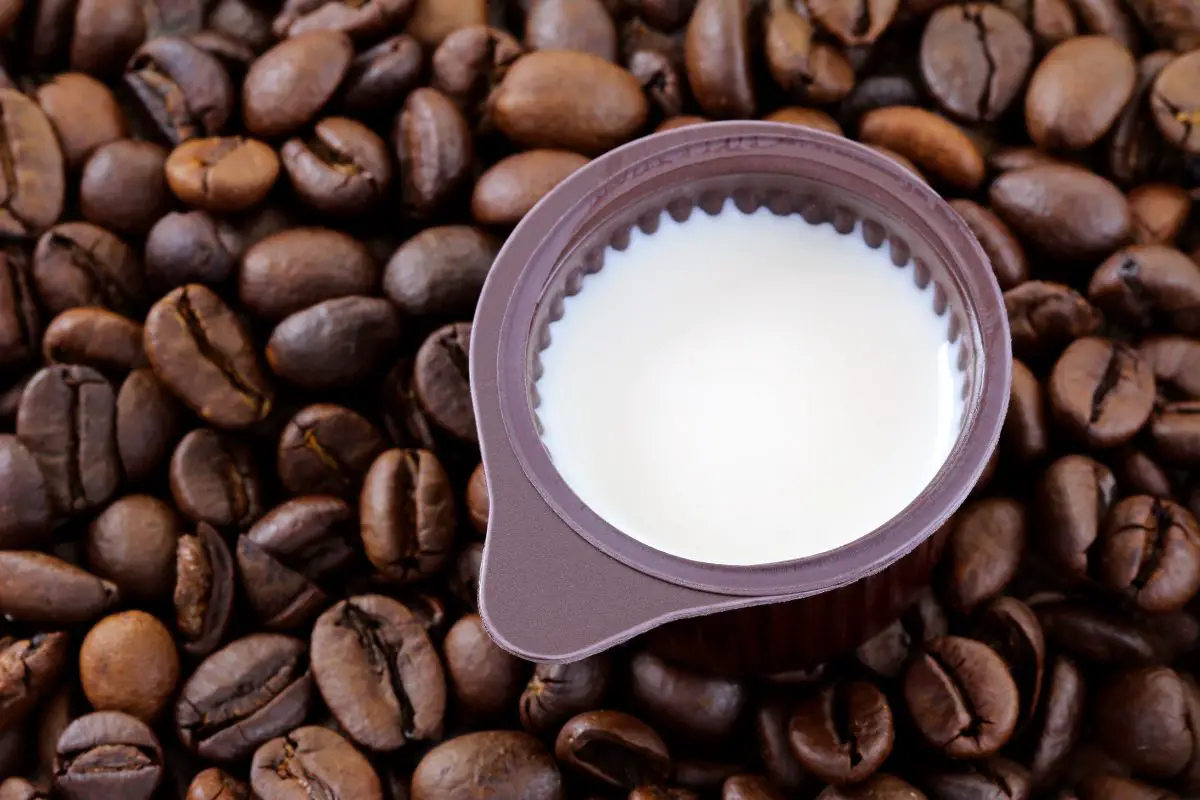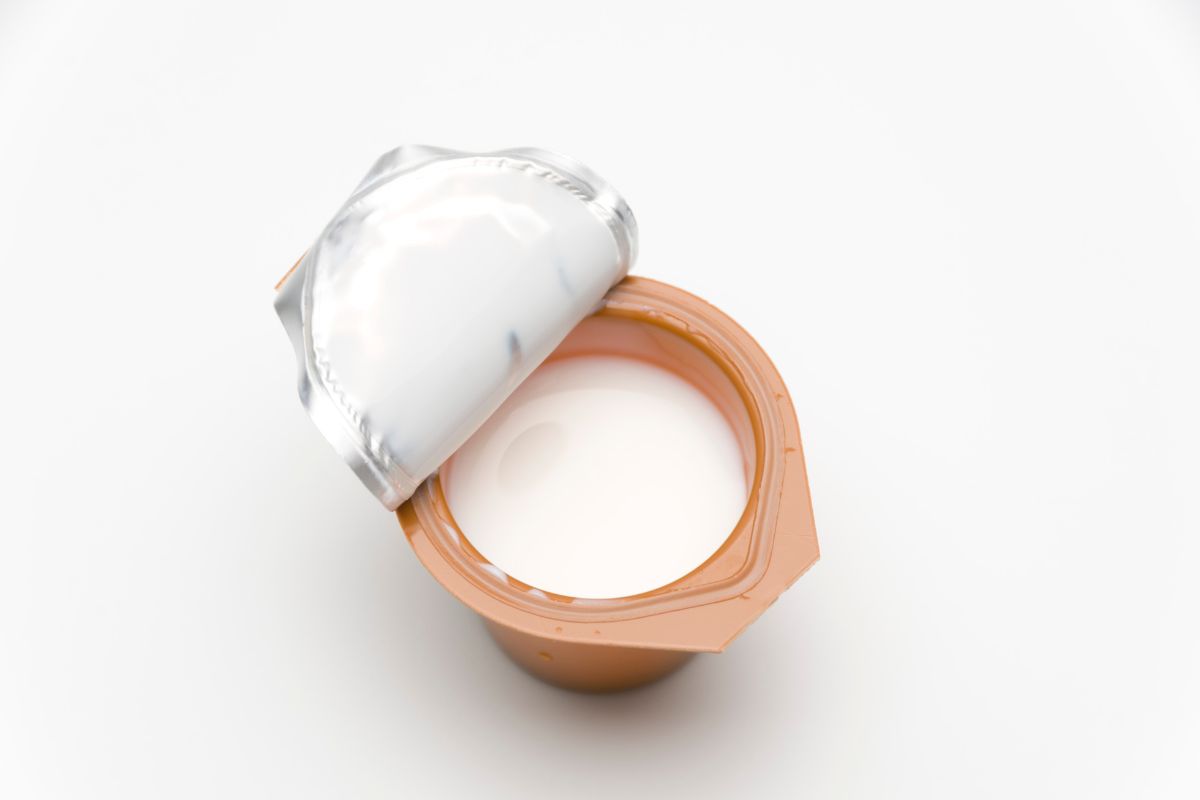Out of sight, out of mind. This idiom aptly captures the plight of many who unknowingly use expired creamer in their daily routines. Understanding the shelf life of creamer and how to identify signs of spoilage is essential for maintaining a safe and enjoyable cup of coffee or tea.

In this article, we delve into the topic of how long creamer lasts and provide valuable insights for proper storage and disposal. By exploring the different types of creamer and the factors that impact their shelf life, readers will gain a comprehensive understanding of this often overlooked aspect of their morning routine.
Furthermore, we will equip our audience with the knowledge needed to identify the telltale signs of spoiled creamer and offer practical tips for safe disposal. Whether you are a coffee connoisseur or simply seeking to enhance your morning ritual, this article will ensure that your creamer remains fresh and free from harmful bacteria.
Key Takeaways
- Liquid creamers have a shelf life of about 2 weeks after opening if refrigerated, while powdered creamers can last several months to a year if stored properly.
- Factors such as moisture, heat, and sunlight can affect the shelf life of creamer.
- Proper storage practices, such as keeping creamer in a cool, dry place away from sunlight and heat sources, can help extend its shelf life.
- Spoiled creamer can be identified by a change in color, sour/off smell, visible mold, or unusual texture, and should not be consumed. Proper disposal of expired creamer is essential for both food safety and environmental protection.
Types of Creamer and Their Shelf Life
Creamer, a popular addition to coffee and tea, comes in various types, each with its own shelf life. It is important to be aware of the different types of creamers and their respective expiration dates to ensure safety and quality.
One common type is liquid creamer, which is typically made with dairy or non-dairy ingredients. Liquid creamers, whether dairy-based or plant-based, generally have a shelf life of about two weeks after opening if stored in the refrigerator. However, it is essential to check the manufacturer’s label for specific instructions.
Powdered creamers, on the other hand, tend to have a longer shelf life. They are often made from dried milk solids, sweeteners, and flavorings. Powdered creamers can last for several months, or even up to a year, if stored properly in a cool and dry place.
Factors such as exposure to moisture, heat, and sunlight can affect the shelf life of creamers. Understanding these factors and following proper storage guidelines can help extend the shelf life of creamers and ensure their safety.
With this knowledge in mind, let us now explore the various factors that affect creamer shelf life.
Factors That Affect Creamer Shelf Life

Factors such as storage conditions and the presence of preservatives significantly impact the shelf life of creamer. Proper storage is crucial to extend the shelf life of creamer. Creamer should be stored in a cool and dry place, away from direct sunlight and heat sources. The temperature should ideally be below 75°F (24°C). Additionally, creamer should be tightly sealed to prevent moisture and air from entering, as exposure to these elements can lead to spoilage.
The presence of preservatives also plays a vital role in determining the shelf life of creamer. Preservatives such as potassium sorbate and sodium benzoate are commonly used to inhibit the growth of bacteria and molds, extending the shelf life of creamer. However, it is important to note that excessive use of preservatives can affect the taste and quality of the creamer.
To provide a comprehensive overview, the table below outlines the factors that affect creamer shelf life:
| Factors | Impact |
|---|---|
| Storage conditions | Proper storage can extend shelf life |
| Presence of preservatives | Preservatives inhibit bacterial and mold growth |
Understanding these factors is essential for ensuring the safety and quality of creamer. In the next section, we will discuss the signs of spoiled creamer.
Signs of Spoiled Creamer
One indicator of compromised creamer quality is the presence of visible mold growth. Mold is a type of fungus that thrives in moist environments, and when it grows on creamer, it can produce toxic substances called mycotoxins. Consuming creamer with mold growth or mycotoxins can lead to various health issues, such as allergic reactions, respiratory problems, and gastrointestinal disturbances. Therefore, it is essential to inspect creamer for any signs of mold before using it.
Apart from mold growth, other signs of spoiled creamer include a sour or off smell, unusual texture or consistency, and changes in color. Creamer that has gone bad may appear curdled, separated, or clumpy, indicating bacterial contamination or spoilage.
To ensure the safety of creamer consumption, it is important to discard any creamer that shows signs of spoilage. Additionally, it is advisable to follow proper storage tips for creamer to prevent spoilage. This includes keeping creamer refrigerated at temperatures below 40°F (4°C), sealing the container tightly after each use, and avoiding exposure to sunlight or excessive heat.
Proper storage practices can help extend the shelf life of creamer and maintain its quality for a longer period of time.
Proper Storage Tips for Creamer
To maintain the freshness and quality of creamer, it is crucial to adhere to proper storage guidelines. Improper storage can lead to the growth of harmful bacteria and the spoilage of creamer. Here are some essential tips for storing creamer:
- Store creamer in a cool and dry place, away from direct sunlight and heat sources. Exposure to heat can cause the creamer to spoil quickly.
- Keep creamer tightly sealed in its original container or transfer it to an airtight container. This helps to prevent air and moisture from entering, which can accelerate spoilage.
- Refrigerate creamer after opening, even if it is labeled as non-perishable. The cold temperature of the refrigerator slows down bacterial growth and extends the creamer’s shelf life.
By following these proper storage tips, you can ensure that your creamer stays fresh and safe to use for a longer period.
However, it is important to know how to tell if creamer has gone bad to avoid consuming spoiled products.
How to Tell if Creamer Has Gone Bad

An indicator of creamer spoilage can be observed when the color changes from a creamy white to a yellow or brownish hue. This color change is usually accompanied by a sour or off smell. The appearance and smell are clear signs that the creamer has gone bad and should not be consumed.
Additionally, if the creamer has developed any mold or clumps, it should be discarded immediately.
Spoiled creamer can also cause health issues if consumed. Bacterial growth in spoiled creamer can lead to food poisoning symptoms such as nausea, vomiting, diarrhea, and abdominal cramps. It is important to note that creamer can spoil even if it is stored properly. Temperature fluctuations or contamination from utensils or hands can introduce bacteria into the creamer, causing it to spoil.
To ensure safety, it is crucial to dispose of expired creamer properly. This can be done by pouring it down the sink or toilet and rinsing the container thoroughly before recycling or discarding it. Avoid pouring expired creamer directly into the trash bin to prevent the risk of leakage or spills. Proper disposal reduces the chances of accidental consumption and minimizes environmental impact.
Disposing of Expired Creamer Safely
Proper disposal of expired creamer is essential to ensure safety and minimize environmental impact, allowing for a swift and secure farewell to this once indulgent delight.
When creamer goes bad, it can become a breeding ground for harmful bacteria, which can lead to foodborne illnesses if consumed. Additionally, expired creamer may develop an unpleasant odor, taste, or appearance, making it unappetizing for consumption.
To dispose of expired creamer safely, it is recommended to first check if it can be consumed by examining its smell, texture, and color. If any abnormalities are detected, it is best to discard it. It is important to never consume creamer that has passed its expiration date.
When it comes to environmentally friendly disposal, pouring expired creamer down the sink or toilet is not recommended. Instead, it should be poured into a sealable container, such as a plastic bag or bottle, and thrown into the trash. This prevents the creamer from entering the water supply or causing harm to wildlife.
Proper disposal of expired creamer is crucial to ensure food safety and protect the environment. By following these guidelines, individuals can safely bid farewell to their expired creamer while minimizing any potential risks.
Frequently Asked Questions
Can I use creamer past its expiration date?
Using creamer past its expiration date is not recommended for safety reasons. Expired creamer may have spoiled or developed harmful bacteria, which can cause foodborne illnesses. It is best to discard creamer after its expiration date to ensure consumer safety.
What are some alternatives to creamer?
Some alternatives to creamer include milk, non-dairy milk substitutes (e.g. almond milk, soy milk), half-and-half, and flavored syrups. These options provide a variety of tastes and textures to enhance your coffee or tea experience.
Can I freeze creamer to extend its shelf life?
Freezing creamer can extend its shelf life, but it may affect its quality and flavor. Creamer can be safely stored in the freezer for up to 2 months, but it is recommended to consume it within a month for optimal taste.
Does creamer need to be refrigerated?
Creamer does not need to be refrigerated, as it is typically shelf-stable. However, it is important to check the packaging for specific storage instructions. Once opened, creamer should be stored in the refrigerator and consumed within a certain timeframe for optimal safety and quality.
Can I use expired creamer in baking or cooking?
Using expired creamer in baking or cooking is not recommended due to potential health risks. Bacterial growth and spoilage can occur, leading to foodborne illnesses. It is crucial to prioritize food safety to avoid any adverse effects on health.
Conclusion
Creamer is a popular addition to coffee and other beverages, but it is important to know how long it lasts to avoid consuming spoiled products.
The shelf life of creamer varies depending on the type, with powdered creamers lasting longer than liquid ones. Factors such as temperature and exposure to air can also affect shelf life.
Signs of spoiled creamer include changes in texture, color, or smell. To prolong shelf life, creamer should be stored in a cool, dry place. If creamer has gone bad, it should be disposed of safely.
Also read:
Can I Use Coffee Creamer Instead Of Milk?
